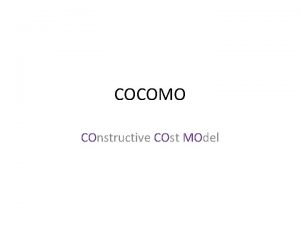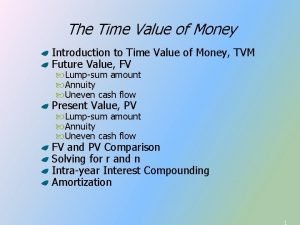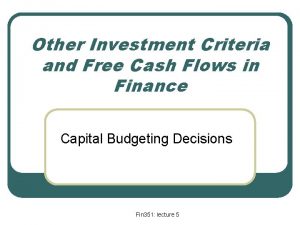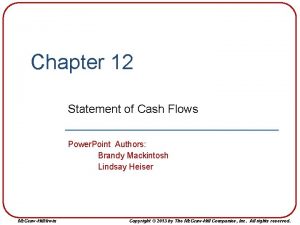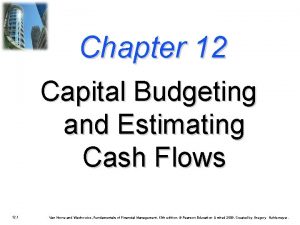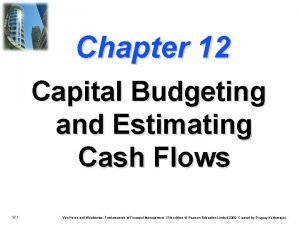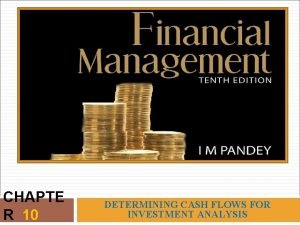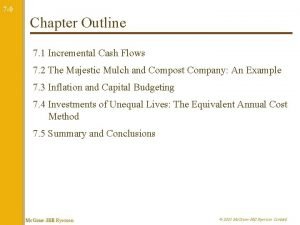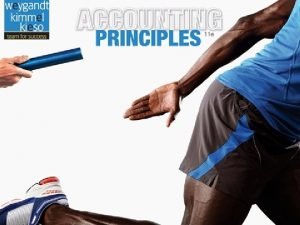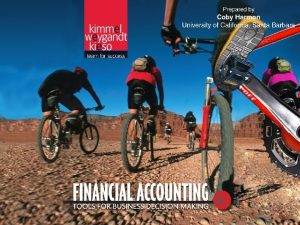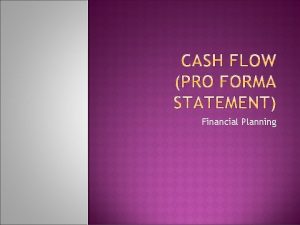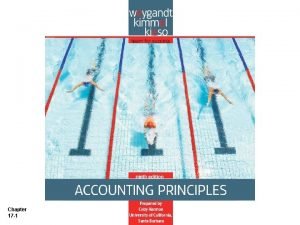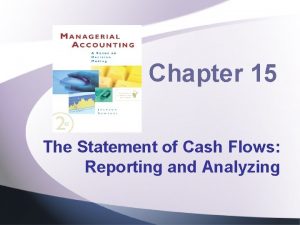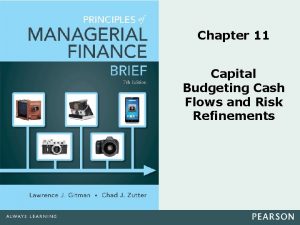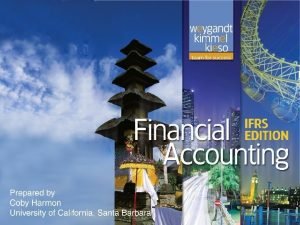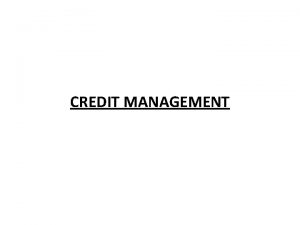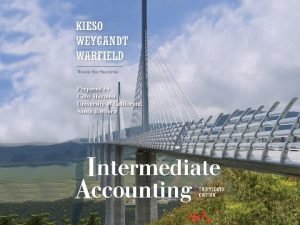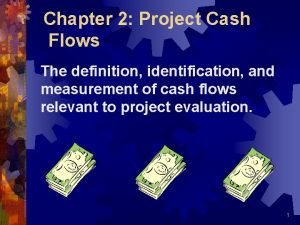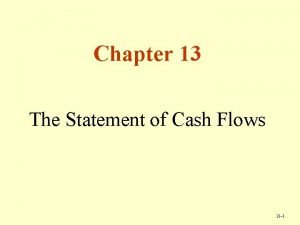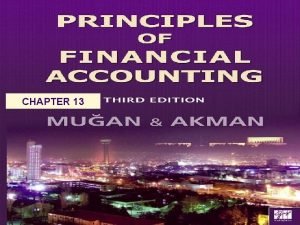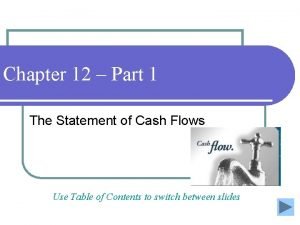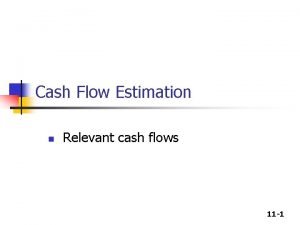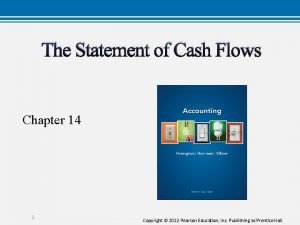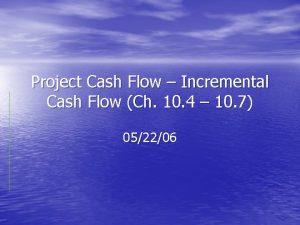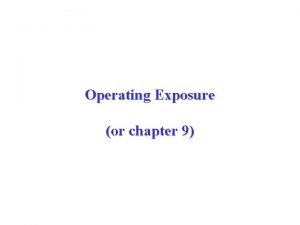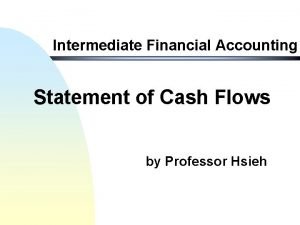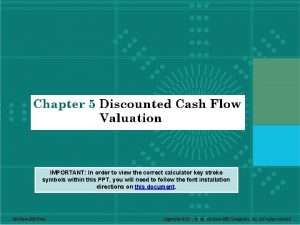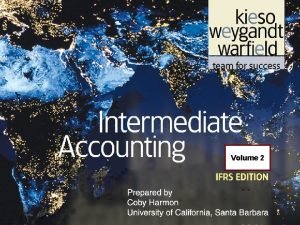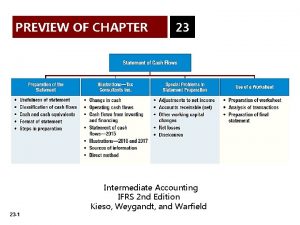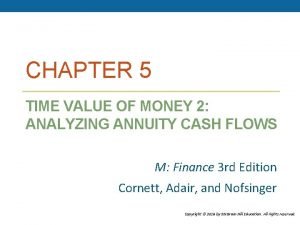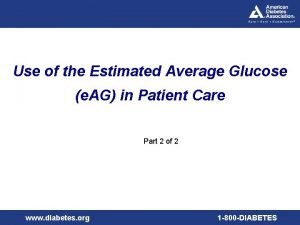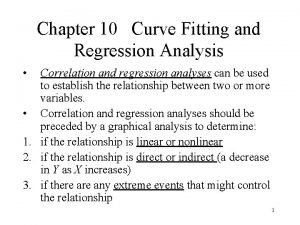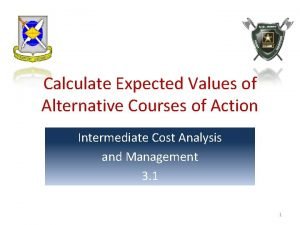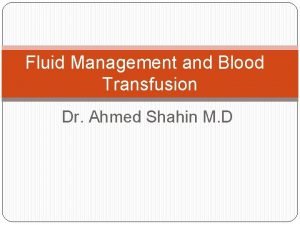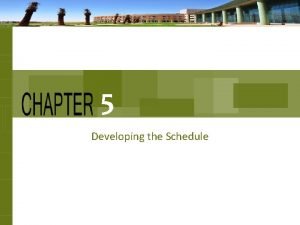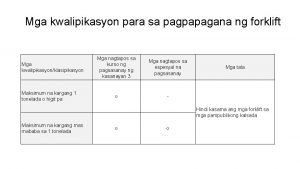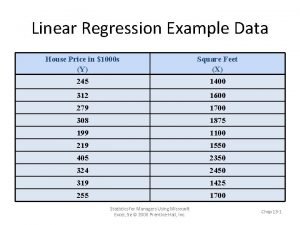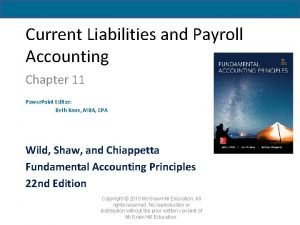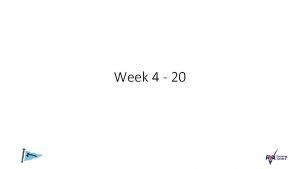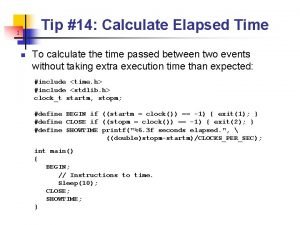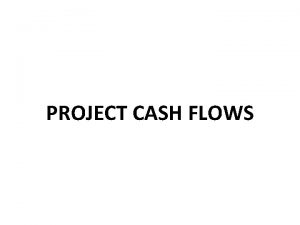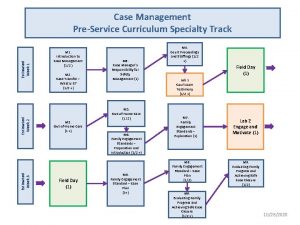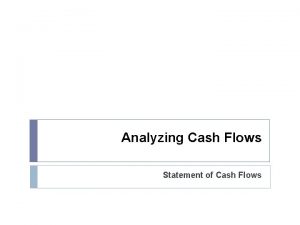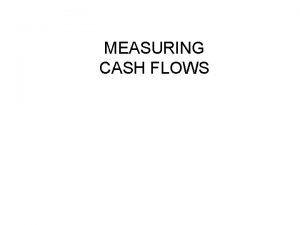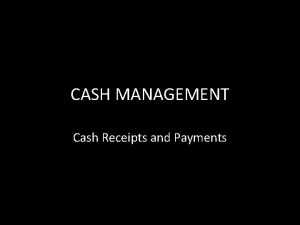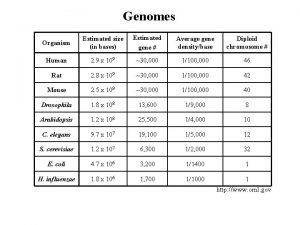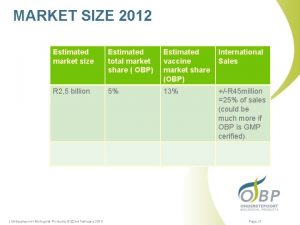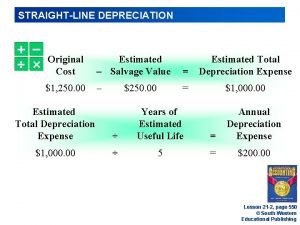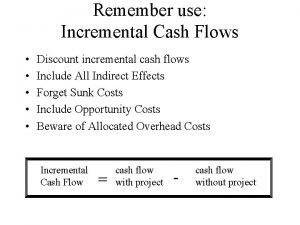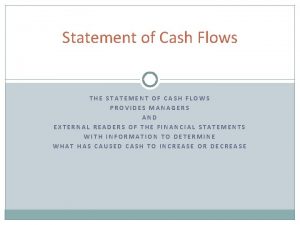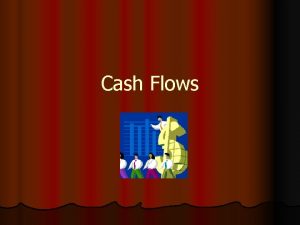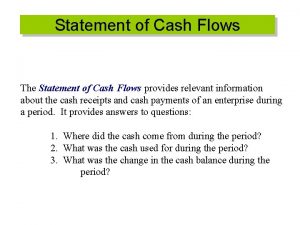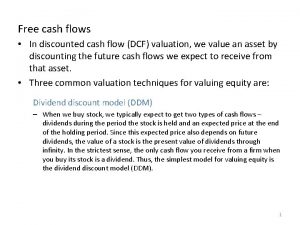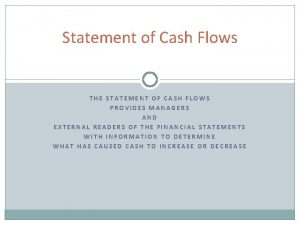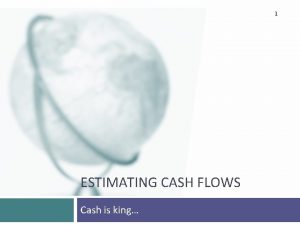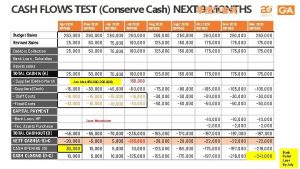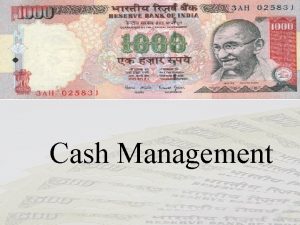PROJECT CASH FLOWS Project cash flows The estimated














































- Slides: 46

PROJECT CASH FLOWS

Project cash flows • The estimated of cash flows are a key element in investment evaluation. • So far we assumed that cash flows were given because we wanted to focus our discussion on investment criteria. • Estimating cash flows-the investment outlays and the cash inflows after the project is commissioned-is the most important, but also the most difficult step in capital budgeting. • Forecast error can be quite large, particularly in gigantic, complex project. For example, when several oil majors decided to construct the

Cont…. • Alsaka pipeline, the initial cost estimate was about US$ 70 million. • The final cost, however, was about US$ 7 billion. • While this may be an extreme example, it highlight the pitfalls of forecasting. • Forecasting project cash flows involves numerous variables and many participate in this exercise. • Capital outlays: Engineering and product development department. • Revenue: Marketing groups

Cont…. . • Operating costs: Production people, cost accountants, purchase managers, personnel executives, tax expert and others. • The role of finance manager is to: ü coordinate the efforts of various departments and obtain information from them, üensure that the forecasts are based on a set of consistent economic assumptions, ükeep the exercise focused on relevant variables, and üminimise the biases inherent in cash flow forecasting

Element of cash flow stream • To evaluate a project you must determine the relevant cash flows, which are the incremental after-tax cash flows associated with the project. • The cash flow stream of a conventional project-a project which involves cash outflows followed by cash inflows-comprises three basic components: i. Initial investment, ii. Operating cash inflows, and iii. Terminal cash flows • The initial investment is the after-tax cash outlay on capital expenditure and NWC when the project is set up.

Cont…. • The operating cash inflows are the after-tax cash inflows resulting from operations of the project during its economic life. • The terminal cash inflow is the after-tax cash flow resulting from the liquidation of the project at the end of its economic life. • BASIC PRINCIPLES OF CASH FLOW ESTIMATION • The following principles should be followed while estimating the cash flows of a project: 1. 2. 3. 4. Separation principle Incremental principle Post-tax principle Consistency principle

1. Separation principle • There are two parts of a project, viz. , the investment (or asset) side and the financing side. • So the cash flows associated with these side should be separated. Fore example, • Suppose a firm is considering a one year project that requires an investment of Birr 1, 000 in fixed assets and WC at time 0. • The project is expected to generate a cash inflow of Birr 1, 200 at the end of year 1 -this is the only cash inflow expected from the project.

Cont…. • The project will be financed entirely by debt carrying an interest rate of 15% and maturing after 1 year. • Assuming that there are no taxes, determine the: i. cash flows associated with the investment side of the project, ii. the rate of return on the investment side of the project, iii. the cash flows associated with the financing side of the project, and iv. the cost of capital on the financing side are as follows:

Solution Financing side: Time Cash flow 0 +1, 000 1 -1, 150 Cost of capital 15% Investing side: Time Cost 0 -1, 000 1 +1, 200 Rate of Return 20% • Note that the cash flows on the investment side of the project do not reflect financing costs (Interest). • The financing cost are included in the cash flows on the financing side and reflected in the cost of capital figure (which is 15%)

Cont…… • The cost of capital is used as the hurdle rate against which the rate of return on the investment side (which is 20%) is judged. • The important point to be emphasised is that while defining the cash flows on the investment side, financing cost should not be considered because they will be reflected in the cost of capital figure against which the rate of return figure will be evaluated. • Operationally, this means that interest on debt is ignored while computing profits & taxes thereon.

Cont…. • Alternatively, if interest is deducted in the process of arriving at profit after tax, an amount equal to ‘interest(1 -tax rate)’ should be added to ‘profit after tax’. • Note that: • PBIT(1 -tax rate)=(PBT + Interest)(1 -tax rate) • = (PBT)(1 -Tax rate) + Interest(1 -tax rate) • = PAT + Interest(1 -tax rate) • Thus, whether the tax rate is applied directly to the PBIT figure or whether the tax adjusted interest, which is simply ‘Interest(1 -tax rate)’ is added to the ‘PAT’ figure we get the same result.

2. Incremental principle • The cash flow of a project must be measured in incremental terms. • To ascertain a project’s incremental cash flows you have to look at what happens to the cash flows of the firm with the project and without the project. • The difference between the two reflects the incremental cash flows attributable to the project. That is, • (PCF for year t) = (CF for the firm with the project for year t) - (CF for the firm without the project for year t).

Cont…… v In estimating the ICF of a project, the ff guidelines must borne in mind; a) Consider all incidental effects: in addition to the cash flows of the project, all its incidental effects on the rest of the firm must be considered. • The project may enhance the profitability of some existing activities of the firm because it has a complementary relationship with them; or • It may detract from the profitability of some of the existing activities of the firm because it has a competitive relationship with them-all these effects must be taken in to account.

Cont……. b) Product cannibalisation refers to the erosion in the sales of the firm’s existing products on account of a new product introduction. • The firm may loses sales to a competitor or to itself (because of the new product). • If the firm is operating in an extremely competitive business and is not protected by entry barriers, product cannibalisation will occur anyway. • Hence the costs associated with it are not relevant in incremental analysis.

Cont…. • On the other hand, if the firm is sheltered by entry barriers like: ü patent protection or ü proprietory technology or ü brand loyalty, • the costs of product cannibalisation should be incorporated in investment analysis. c) Ignore Sunk costs: A sunk cost refers to an outlay already incurred in the past or already committed irrevocable. • So it is not affected by the acceptance or rejection of the project under consideration.

Cont…. • Suppose, fore example, a company is debating whether it should invest in a project. • The company has already invest 1 nillion birr for preliminary work meant to generate information useful for this decision. • Is this 1 million birr a relevant cost for the proposed project? • Clearly not. • 1 millon birr represent a sunk cost as it can not be recovered irrespective of whether the project is accepted or not.

Cont…. • Include opportunity cost: if a project uses a resources already available with the firm, there is a potential for an opportunity cost-this is the cost created for the rest of the firm as a consequence of undertaking the project. • The opportunity cost of a resource is the benefit that can be derived from it by putting it to its best alternative use. • So, to analyse the opportunity cost, ask the question “is there any alternative use of the resource if the project is not undertaken? ”

Cont. . • For most resources, there will be an alternative use: a) The resource may be rented out: In this case the opportunity cost is the rental revenue foregone by undertaking the project. üFor example, if a project uses a vacant factory building owned by the firm, the revenue that can be derived from renting out this building represents the opportunity cost. b) The resource may be sold: In this case the opportunity cost is the value realised from the sale of the resource after paying tax.

Cont…. üFor example, if the project uses an equipment which is currently idle, its opportunity cost is its sales price, net of any tax liability. • The resource is required elsewhere in the firm: In this case the cost of replacing the resource represent its opportunity cost üFore example, if a project requires the services of some experienced engineers from an existing division of the firm, the cost that is borne by that division to replace those engineers represents the opportunity cost.

Cont… • Question the allocation of overhead cost: Costs which are only indirectly related to a product (or service) are referred to as overhead costs. • They include items like general administrative expenses, managerial salaries, legal expenses, rent, and so on. • Accountants normally allocate overhead costs to various products on some basis like labour hours, or machine hours, or prime cost which appear reasonable. • Hence when a new project is proposed, a portion of the OHCs of the firm is usually allocated to it.

Cont…. • The OH allocated to it, however may hardly have any relationship with the incremental OHC, if any, associated with it. • For purposes of investment analysis, what matters in the incremental OHCs (along with other incremental costs) attributable to the project and not the allocated OHCs. • Estimate Working Capital Properly: A part from fixed assets, a project requires working capital. • Outlays on WC have to be properly considered while forecasting the project cash flows.

Cont…. • In this context, the following points must be remembered: üWorking capital (or more precisely, NWC) is defined as: CA-CL and provision. Note that CL & provisions, also referred to as non-interest bearing current liabilities, are deducted from CA because they represent non-investor claims. üThe requirement of WC is likely to change overtime. When a project is set up, there is an initial investment in the WC. This tend to change over time as the output of the project changes.

Cont…. üWhile fixed asset investment are made during the early years of the project and depreciated over time, working capital is renewed periodically and hence is not subject to depreciation. Thus the WC at the end of the project life is assumed to have a salvage value equal to its book value.

3. Post-tax principle • Cash flow should be measured after-tax basis. • Some firm may ignore tax payments and try to compensate this mistake by discounting the pre-tax cash flows at a rate that is higher than the cost of capital of the firm. • Since there is no reliable way of adjusting the discount rate, you should always use after-tax cash flows along with after tax-discount rate. • The important issues in assessing the impact of taxes are: ü What tax rate should be used to assess tax liability? ü How should losses be treated? ü What is the effect of noncash charges?

Cont… • Tax Rate: Let us examine the choices in terms of taxes. • The average tax rate is the total tax burden as a proportion of the total income of the business. • The marginal tax rate (MTR) is typically higher than the average tax rate because tax rates are often progressive. • The income from a project typically is marginal. • Put differently it is additional to the income generated by the asset of the firm already in place. • Hence, the MTR of the firm is the relevant rate for estimating the tax liability of the project.

Cont…. • Treatment of losses: because the firm as well as the project can incur losses, let us look at various possible combinations and the ways to deal with them. • The different scenarios are summarised below: Scena rio Project Firm Action 1 Incur losses Defer tax savings 2 Incur losses Makes profits Take tax saving in the year of loss 3 Make profit Incur losses Defer taxes until the firm makes profit 4 Incur losses ---- Defer taxes saving until the project makes profits

Cont…. • Effect of noncash charges: noncash charges can have an impact on cash flows if they affect liability. • The most important of such noncash charges is depreciation. • The tax benefit of depreciation is: Depreciation * marginal tax rate

4. Consistency principle • Cash flows and the discount rates applied to these cash flows must be consistent with respect to the investor group and inflation. • Investor group: The cash flow of a project may be estimated from the point of view of all investors (equity shareholders as well as lenders) or from the point of view of equity shareholders. • The cash flow of a project from the point of view of all investors is the cash flow available to all investors after paying taxes and meeting investment needs of the project, if any.

Cont…… • It is estimated as follows: • Cash flow to all investor =PBIT(1 -Tax rate) + Depreciation & non cash charges - Capital Expenditure - Change in working capital • The cash flow of a project from the point of view of equity shareholders is the cash flow available to equity shareholders after paying taxes, meeting investment needs, and fulfilling debtrelated commitments. • It is estimated as follows:

Cont…. • Cash flow to equity shareholders = Profit after tax + Depreciation & other noncash charges - Preferred dividend - capital expenditures - change in working capital -repayment of debt + proceeds from debt issues - redemption of preferred capital + proceeds from preferred issue

Cont…. • The discount rate must be consistent with the definition of cash flow: Cash flow Discount rate Cash flow to all investors WACC Cash flow to equity Cost of Equity • Generally, in capital budgeting we look at the cash flow to all investors and apply the WACC of the firm. • Inflation: In dealing with inflation, you have two choices.

Cont…. • You can incorporate expected inflation in the estimates of future cash flows and apply a nominal discount rate to the same. • Alternatively, you can estimate the future cash flows in real terms and apply a real discount rate to the same. • Note that the following relationship holds b/n nominal & real values: • Nominal CFt = Real CFt (1 -Expected inf. Rate)t • Nominal DR = (1+ Real DR) (1+ Expected Inf. Rate)-1

Cont… • The consistency principle, in essence, suggests the following match up: Cash flow Discount Rate Nominal cash flow Nominal Discount rate Real cash flow Real discount rate • Generally, in capital budgeting analysis nominal cash flows are estimated and nominal discount rate is used.

Cash flow illustration • Illustration 1. • ABC enterprises is considering a capital project about which the following information is available: ü The investment outlay on the project will be 100 million Birr. This consists of 80 million on plant and machinery and 20 million on net working capital. The entire outlay will be incurred at the beginning of the project. ü The project will be financed with 45 million of equity capital, 5 million of preference capital, and

Cont…. . 50 million of debt capital. Preferred capital will carry a dividend rate of 15%, debt capital will carry an interest rate of 15%. ü The life of the project is expected to be 5 years. At the end of 5 years, fixed asset will fetch a net salvage value of 30 million whereas net working capital will be liquidated at its book value. ü The project is expected to increase the revenue of the firm by 120 million per year. The increase in costs on account of the project is expected to be 80 million per year (this includes all items of

Cont…. . Costs other than depreciation, interest, and tax). The effective tax rate will be 30%. ü Plant and machinery will be depreciated at the rate of 25% per year as per the declining book value method of depreciation. Hence the depreciation charges will be First year Second year Third year Fourth year 25% of 80 million 25% of 60 million 25% of 45 million 25% of 33. 75 million 20 million 15 million 11. 25 million 8. 44 million Fifth year 25% of 25. 31 million 6. 33 million

Cont…… • Required: given the above detail, prepare the project cash flows

Solution • Project cash flow (in millions of Birr 0 Years 0 1 2 3 4 5 1. FA (80. 00) - - - 2. NWC (20. 00) - - - 3. Revenues 120 120 120 4. Cost (other than depr. & int) 80 80 80 5. Deprec. 20 15 11. 25 8. 44 6. 33 6. PBT 20 25 28. 75 31. 56 33. 67 7. Tax (30%) 6 7. 5 8. 63 9. 47 10. 10 8. PAT 14 17. 5 20. 12 22. 09 23. 57 9. Net salvage value of FA - - 30 10. Recovery of NWC - - 20 34 32. 5 31. 37 30. 53 29. 90 11. Initial outlay (100. 00) 12. Operating Cash inflow(8+5) 13. Terminal Cash inflow (9+10) 14. Net Cash flow (11+12+13) 50 (100. 00) 34 32. 5 31. 37 30. 53 79. 90

Illustration 2 • FARMID Ltd. Is engaged in the manufacture of pharmaceuticals. The company was established in 1991 and has registered a steady growth in sales since then. Presently the company manufactures 16 products and has an annual turnover of 2200 million birr. • The company is considering the manufacture of a new antibiotic preparation. K-cin, for which the following information has been gathered: 1. K-cin is expected to have a product life cycle of five years and thereafter it would be withdrawn from the market.

Cont…. • The sales from this preparation are expected to be as follows: Year 1 2 3 4 5 Sales (birr in millions) 100 150 200 150 100 2. The capital equipment required for manufacturing K-cin is birr 100 million and it will be depreciated at the rate of 25% per year as per DBV method for tax purpose.

Cont… • The expected net salvage value after 5 years is birr 20 million. 3. The WC requirement for the project is expected to be 20% of sales. At the end of five years, WC is expected to be liquidated at par, barring an estimated loss of birr 5 million on account of bad debt. The bad debt loss will be a tax deductable expense. 4. The accountant of the firm has provided the following cost estimate for K-cin:

Cont…… RM Cost Variable labour cost Fixed annual operating & maintenance cost OH allocation (Excluding Deprec, Maintenance & Interest 30% of sales 20% of sales 5 Million birr 10% of sales 5. The manufacture of K-cin would also require some of the common facilities of the firm. The use of these facilities would call for reduction in the production of other pharmaceutical preparation of the firm. This would entail a reduction of 15 million birr of CM.

Cont…. . 6. The tax rate applicable to the firm is 40%. • Required: based on the above information prepare the cash flow for the project

Cash flow for the K-cin project Year 0 1 2 3 4 5 1. Capital Requirement (100) - - - 2. Level of WC (ending) (20) 40 30 20 0 30 3. Revenues 100 150 200 150 100 4. RMC 30 45 60 45 30 5. Labour cost 20 30 40 30 20 6. Oper. & Maint. cost 5 5 5 7. Loss of Contribution 15 15 15 8. Depreciation 25 18. 8 14. 1 10. 5 7. 9 9. Bad debt loss - - 10. PBT 5 36. 2 65. 9 44. 5 17. 1 11. Tax 2 14. 5 26. 4 17. 8 6. 8 12. PAT 3 21. 7 39. 5 26. 7 10. 3 - - 5

Year Cont…. 0 1 2 - 3 21. 7 39. 5 26. 7 10. 3 13. Net salvage value of capital Requirement - - 20 14. Recovery of WC - - 20 (100) - - - 12. Profit after tax (BBF) 15. Initial Inv ‘t 3 4 5 16. Operating Cash inflow (12+8+9) - 28 57. 9 53. 6 37. 2 23. 2 17. Increase in WC 20 10 10 18. Terminal cash in flow (14+15 16+17 (120) 18 47. 9 63. 6 47. 2 63. 2 (10) - v The loss of contribution (item 7) is an opportunity cost. v OH expenses allocated to the project have been ignored as they do not represent incremental OH expense for the firm as a whole.

Cont… v It is assumed that the level of WC is adjusted at the beginning of the year in r/n to the expected sales for the year. ü Fore example, WC at the beginning of year 1 (i. e at the end of year 0) will be 20 million birr that is 20% of the expected revenue of 100 million birr for year 1. ü Like wise, the level of WC at the end of year one (i. e at the beginning of year 2) will be 30 million that is 20% of the expected revenue of 150 million for year 2.
 Direct labor budget formula
Direct labor budget formula Suppose a project was estimated to be 400 kloc
Suppose a project was estimated to be 400 kloc Pv of cash flows formula
Pv of cash flows formula Incremental cash flows
Incremental cash flows Payback time formula
Payback time formula Statement of cash flows indirect method
Statement of cash flows indirect method How to calculate incremental cash flows
How to calculate incremental cash flows Incremental cash flow
Incremental cash flow How to calculate incremental cash flows
How to calculate incremental cash flows Examples of incremental cash flows
Examples of incremental cash flows Partial statement of cash flows
Partial statement of cash flows Indirect method of cash flow
Indirect method of cash flow Cash flow pro
Cash flow pro Prepaid expense in cash flow statement
Prepaid expense in cash flow statement The statement of cash flows reports
The statement of cash flows reports Risk adjusted npv
Risk adjusted npv Taxes payable cash flow statement
Taxes payable cash flow statement Cash flow in credit management
Cash flow in credit management Chapter 23 statement of cash flows
Chapter 23 statement of cash flows Relevant cash flows definition
Relevant cash flows definition The statement of cash flows classifies items as
The statement of cash flows classifies items as Chapter 13 statement of cash flows
Chapter 13 statement of cash flows Chapter 13 statement of cash flows
Chapter 13 statement of cash flows Statement of cash flows partial
Statement of cash flows partial Relevant cash flow
Relevant cash flow Destiny corporation is preparing its
Destiny corporation is preparing its Relevant cash flow
Relevant cash flow What is operating exposure
What is operating exposure Intermediate cash flows
Intermediate cash flows Effective annual rate
Effective annual rate Chapter 23 statement of cash flows
Chapter 23 statement of cash flows Future value of multiple cash flows example
Future value of multiple cash flows example The statement of cash flows helps users
The statement of cash flows helps users Chapter 23 statement of cash flows
Chapter 23 statement of cash flows Future value of multiple cash flows example
Future value of multiple cash flows example Estimated ag
Estimated ag Formula for inelastic collision
Formula for inelastic collision Standard error of regression
Standard error of regression How to find expected values
How to find expected values 421 rule
421 rule The estimated duration for each activity must be the
The estimated duration for each activity must be the Kwalipikasyon
Kwalipikasyon Linear data
Linear data Employee vacation benefits are estimated liabilities
Employee vacation benefits are estimated liabilities What is estimated position
What is estimated position Elapsed time formula
Elapsed time formula It has been estimated that
It has been estimated that

